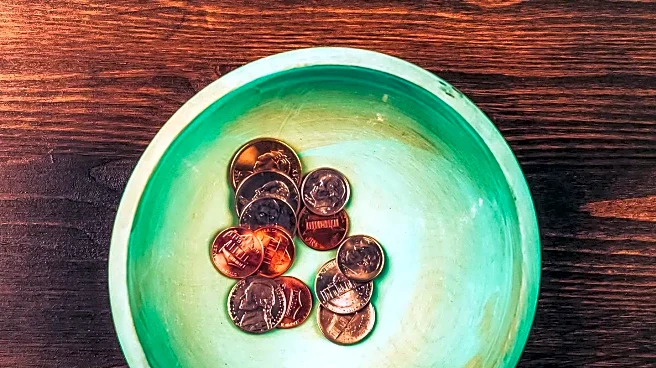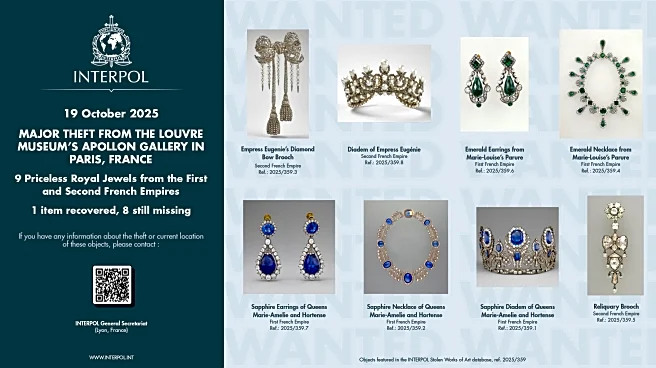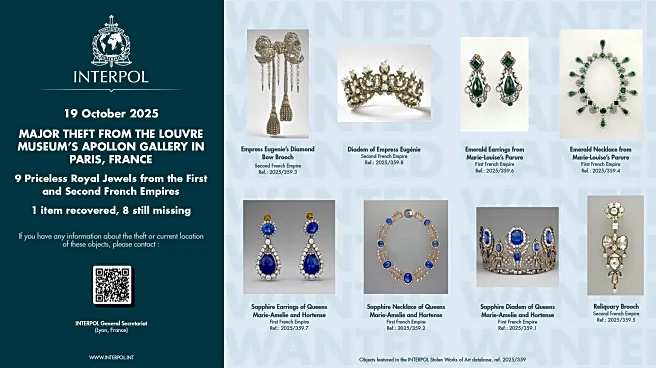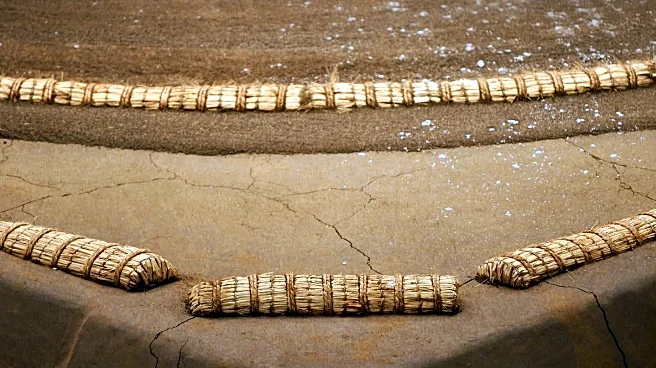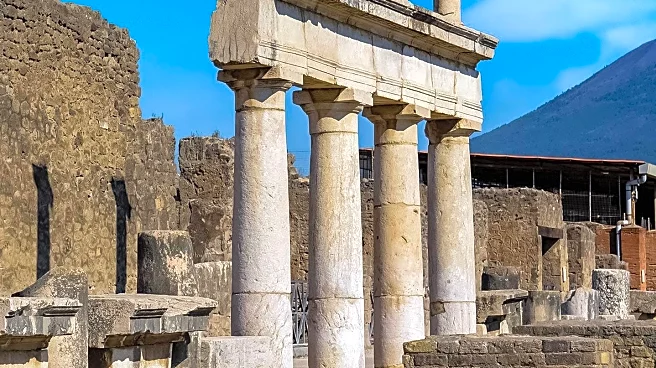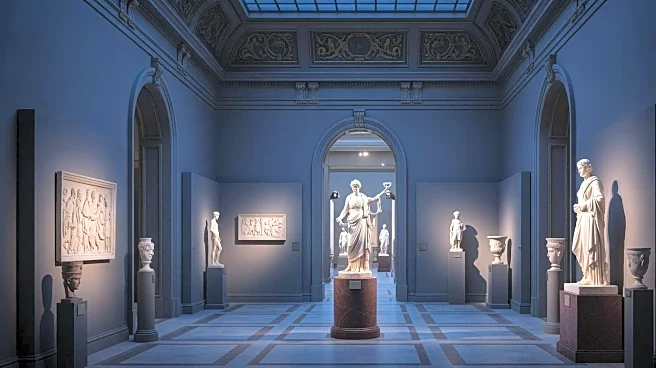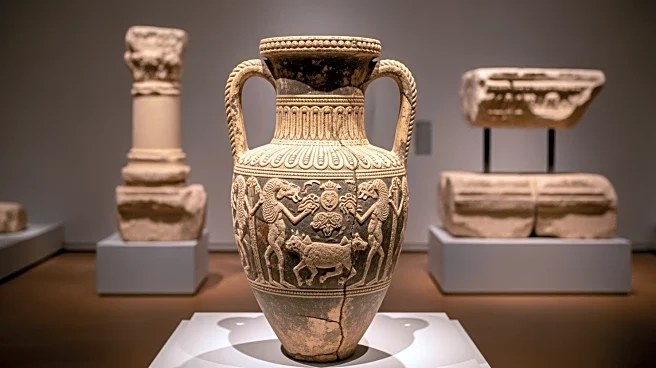What's Happening?
David Moss, a metal detectorist from Cheshire, has uncovered what could be the largest hoard of Roman coins ever found in Wales. The discovery, made in a field in north Wales, consists of up to 15,000
coins stored in two clay pots. Moss, who has been metal detecting for nearly a decade, found the coins with his friend Ian Nicholson. The coins are now being analyzed by experts at the National Museum Cardiff. The find is significant, as it surpasses previous large discoveries in Wales, such as the 10,000 coins found near Chepstow in the 1990s. The coins are believed to have been buried during a period of turmoil or as a religious offering.
Why It's Important?
This discovery is significant for historical and archaeological research, providing insights into Roman-era activities in Wales. The coins could reveal information about the economic conditions and societal structures of the time. For the local community and historians, this find enhances the understanding of Roman influence in the region. Economically, the coins' valuation could benefit Moss and the landowner, as they are entitled to a share of the reward if the coins are deemed treasure. The find also highlights the importance of metal detecting in uncovering historical artifacts, potentially encouraging more individuals to engage in this hobby.
What's Next?
The coins will undergo cleaning and dating at the National Museum Cardiff. If deemed treasure, the British Museum may express interest in acquiring them. The Treasure Valuation Committee will assess the coins' value, and Moss, along with the landowner, will receive a share of the reward. The assessment process is expected to conclude next year. This discovery may prompt further archaeological interest and exploration in the area, potentially leading to more significant finds.
Beyond the Headlines
The discovery raises questions about the ethical and legal responsibilities of metal detectorists. It underscores the importance of reporting finds to authorities to preserve historical integrity. The find also highlights the cultural significance of such discoveries, as they connect modern society with its historical roots. The potential for further discoveries in the area could lead to increased tourism and educational opportunities, fostering a deeper appreciation for local history.
